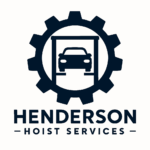Automotive Lift FAQ
Based on ANSI/ALI ALCTV Standards and Industry Best Practices
1. What is an automotive lift?
An automotive lift is a device used to raise a vehicle to allow access to its undercarriage for repair, maintenance, inspection, and installation tasks. Common types include two-post, four-post, scissor, in-ground, and portable lifts.
2. What safety standards govern automotive lifts?
The primary standard is ANSI/ALI ALCTV, which outlines the design, construction, testing, and validation of vehicle lifts. Other related standards include:
- ANSI/ALI ALOIM – Safety Requirements for Operation, Inspection, and Maintenance
- ANSI/ALI ALIS – Safety Requirements for Installation and Service
These are all published by the Automotive Lift Institute (ALI) in cooperation with ANSI (American National Standards Institute).
3. What does “ALI Certified” mean?
ALI Certification ensures that a lift has been independently tested and verified to meet the safety and performance requirements set by ANSI/ALI ALCTV. Certified lifts bear a gold ALI/ETL Certification Label. This certification is essential for shops to meet OSHA and insurance requirements.
4. What is the load rating of a lift, and how is it determined?
The load rating (e.g., 9,000 lbs, 15,000 lbs) refers to the maximum lifting capacity of the lift. According to ANSI/ALI ALCTV, this rating must be tested to 150% of rated load without permanent deformation and must support 200% of rated load statically as part of validation.
5. Are lifts required to have mechanical locking systems?
Yes. ANSI/ALI ALCTV requires that all certified lifts include positive mechanical load-holding devices (safety locks), which automatically engage at preset intervals during lifting. These must be manually disengaged for lowering, enhancing safety in the event of hydraulic failure.
6. How often should a lift be inspected and maintained?
According to ANSI/ALI ALOIM, lifts must undergo:
- Daily Pre-use Inspections by operators (check for fluid leaks, damage, proper operation of locks, etc.)
- Annual Inspections by a Qualified Lift Inspector (QLI) – many insurers and OSHA require this documentation.
- Routine Maintenance per manufacturer instructions, typically every 3–6 months or after a set number of cycles.
7. Can anyone install or service an automotive lift?
No. As per ANSI/ALI ALIS, lifts must be installed and serviced by qualified personnel, using manufacturer instructions and following all applicable electrical, mechanical, and anchoring standards (e.g., anchoring into reinforced concrete ≥ 4" thick for most lifts).
8. What are the anchoring and concrete requirements for two-post lifts?
Most two-post lifts require:
- A minimum 4” thick slab of 3,000 psi concrete (some require more)
- No cracks or seams within the lift’s base plate footprint
- Properly torqued anchors as per manufacturer’s specs Check each model’s installation manual and ALI guidelines to confirm.
9. What should I do if my lift is damaged or not functioning properly?
Immediately remove the lift from service and tag it "out of order." A qualified technician must inspect and repair it before use resumes. Continuing operation of a faulty lift can violate OSHA regulations and void warranties or insurance.
10. How can I verify if my lift is ALI Certified?
You can check the ALI Directory of Certified Lifts on the official ALI website: https://www.autolift.org. Each certified lift has a unique serial number tied to the certification database.
11. Are portable and low-rise lifts held to the same standards?
Yes. Regardless of size or style, if the lift is marketed for vehicle service and meets the lifting height and capacity thresholds set by ALI, it must comply with the same core ANSI/ALI standards to be certified.
12. What are the operator's responsibilities regarding lift safety?
Operators are responsible for:
- Completing lift training (as per ANSI/ALI ALOIM)
- Performing daily checks
- Following vehicle positioning guides
- Using adapter kits or lift points recommended by the vehicle manufacturer
- Never bypassing safety mechanisms
13. Can lifts be modified after installation?
No. Any structural or mechanical modification may void certification and warranty, and can compromise safety. Always consult the manufacturer or an ALI-certified service provider before making changes.
14. Are there special considerations for electric vehicles (EVs) on lifts?
Yes. EVs often have different center of gravity and lift points, and may be heavier than combustion vehicles of similar size. Always check the EV manufacturer's lifting procedures and avoid contact with high-voltage battery zones.
15. What training is available for lift operators and technicians?
The ALI Lift Inspector Certification Program and Operator Safety Training Program are two key offerings. Many manufacturers and safety organizations also provide training material aligned with ANSI/ALI ALOIM requirements.
